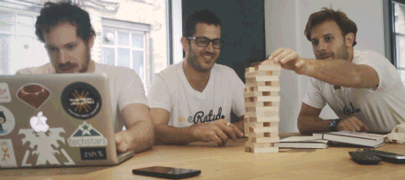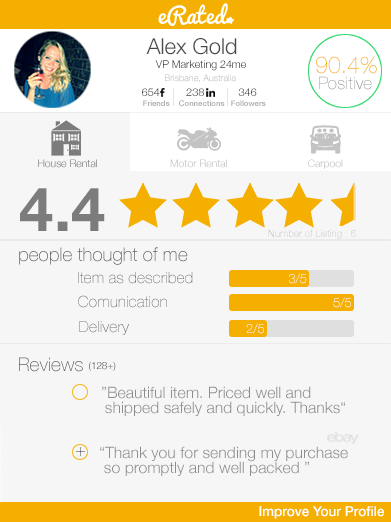We are finally branching out and starting to expand our warm and cozy family. From a tight group of 4 individuals, we have reached a point where we need to bring in strangers-soon-to-be-family (like you) to share this vision of ours of building something grand that can change the world.
So…we sat down as a team and started thinking – how do we bring individuals that not only we trust and admire them for their brilliance, but that can also match our company’s culture and responsibilities?
We are looking to build a relationship here and every relationship is about buying and selling. We buy your productivity and creativity and we sell you a salary and sense of belonging.
In every relationship, you always give and take. Relationships are best when there’s a lot of trading going on. An interview is very much like that. It’s about both of the parties involved evaluating the worth of the trade. Most companies out there focus on how the employee can better and improve the company, but as with any trade, if it’s one-sided, one sided will feel neglected.
In this blog post we’ll put out offer on the table.
The basic process that an interviewee will go through in our company is:
- Research: CV, referral or Linkedin hunt.
- Flirting: We do 2 Skype/Google Hangout interviews-
- Attraction – An initial call with one of us.
- Going out with our friends – A second call with a CTO friend.
3. Homework: We give you a challenge that fits your skillset.
4. Dating: We bring you in for an in-person interview and fun day with us.
Selling:
Research Phase
We like to give you, our candidates as many opportunities to research us and our company.
- Our Linkedin profiles can be found here: Dan, Yoav, Boaz, Guy.
- In this blog you can read about our experience through TechStars.
- You can read about our technology stack (bit further below) and identify what you are already familiar with and what you’ll need to catch up upon if we both decide it’s a fit.
- In the informational document we provided you with, you can get up to speed with our vision, product, market and competition.
We believe that the more information we provide you with to get to know us, the better. We expect you to use this information as a basis for discussion points in the later interview phases. We expect you to know a little bit about what eRated does and the kind of culture we expect to maintain. We have written this blog so we can make things public because we want the candidate to be armed with questions, concerns, or ideas for improvements. We want you to have an idea of what we’re selling.
Flirting Phase
This phase will include 2 sessions - one with one of us and one with one of our CTO friends (we’ll explain the rationale behind this below).
First session (‘Attraction’) – In this session, it is our job to clarify all the muddled points that we couldn’t convey properly in the information we sent over about our product, hiring process, vision, culture, our and your expectations. We’ll ask you about your background in the various companies you worked in, what you think you have accomplished and what you’re still trying to achieve, we’ll ask you to elaborate about a problem or two you were faced with and expect you to explain how you solved it. Essentially, we’ll do everything that you’ll typically do in a first date condensed into a 30-45 minute conversation.
It is your goal making sure eRated fits what you’re looking for and it is our goal in this conversation to make sure you fit our company culture. So what is our culture you ask?
Well, our ideal employee is an employee that always pushes himself forward and tries to do the maximum he can instead of thinking about just accomplishing the structured set of tasks we allocated for the sprint. Our ideal employee is an optimist and has a positive attitude. Our ideal employee is one that puts the team’s interest above his own. We’re looking for people with an entrepreneurial mindset and not small minded employees (worked in a startup? even better). We’re looking for managers, individuals that can manage themselves and in the future – others as well. We’re looking for people that love what they do and loving educating themselves on new topics (when you learn, we learn – your ideas are essential for our growth). And last, but definitely not least, we’re looking for people whom we’d love to hang out with in the office and outside of it (Tuesday team night out!).
Second Session (Interview with a CTO from our circle of friends) – The rationale behind this interview is that we as a team are very much biased to look for exactly what we need. By outsourcing this interview to a person whom we totally trust, we are able to have a neutral person do an in-depth tech interview and point out your strengths and weakness (we all have those) so we can take notice of them in later stages.
Homework Phase
If both interviews went well, as a next step we give out a take home quiz. This is reflective of the kind of job you’re going to be doing at eRated. If you’re a full stack guy or gal, we’ll ask for a small project that does one difficult thing, then we tell you that you can add all the bells and whistles you want in order to showcase your abilities. We make the challenge vague enough to have you interpret it on your own and build something fun and interesting. This is another selling point - that we don’t tell you how to complete your work. You should research and decide for yourself the best course of action. That’s how startup world is. Specs are meant to be broken, cut down, expanded upon, or even thrown away sometimes. We’re selling you that you’re not followers, but leaders. You have a brain - and you will use it.
When the homework comes back, we’ll have one of us take look at it. If it’s worthwhile, we’ll show it to the team. They’ll comment and critique and we can move forward to the dating phase J
Dating Phase
The dating phase is our last step in the process. We need to make sure we feel comfortable working with you and you feel at home working with us. In this session, you will essentially have some alone time with every single person in the company. An example day can look like:
1000 Intro Meeting with Boaz
1020 Homework walkthrough with Guy
1130 Breakfast or lunch with Dan regarding business, sales and technology
1230 Beer with Yoav - talking about product and design.
1330 Company vision and next steps with Boaz over some good Italian coffee.
We believe it’s just common courtesy to give people an idea of what they’re walking into. Plus it helps to align the team so they don’t overlap questions or waste time by asking “fluffy” questions.
Finally, you, the candidate know the entire team, you’ve seen how we work and you’ve asked your questions. We’ve sold you all we have to offer. And that’s all we can do.
Eventually, our goal is to have you leave the eRated office thinking, “I’m so excited about building and hacking with these guys!”
Buying:
Essentially we’re trying to buy three things from a candidate: 1. Technical abilities. 2. Ambition. 3. Culture.
In the Research Phase we’ll be looking to see that you have relevant experience in our field. We’ll be looking to see the products you built and the open sources projects you have contributed to. We don’t really care whether you went to university or not as in the past we’ve met engineers who were far superior developers than the PHDs we met. We’re looking for people who write code as a passion and not as a job. We’ll be looking for people who talk and breathe technology like we do.
In the Flirting Phase, we’ll ask you what kind of blogs you read and how do you stay up to date with your current technology stack and new and unfamiliar tech stacks. We’ll ask you who you’re code mentors are.
We’ll go over your cover letter and drill down into the listed topics until you can’t elaborate further or we feel that you know more than us about the topic and we ran out of smart questions. The point here is to invoke a good discussion between us.
We’ll ask you why you want to work with us at eRated. If you don’t have a compelling answer here, we’ll not buy into what you’re selling…
In the Homework Phase, we love seeing homework with a detailed readme that discusses the choices you have made. The homework should show that the candidate exerted effort and that you enjoyed it. Enjoyment shows in the work both in the quality and the attention to detail. Talk about your contemplations when building this project and why did you choose implementing it the way you did.
We prefer our candidates write their homework using our development stack (or at least some it):
App - Ruby on Rails, Postgresql, MongoDB, Redis (for Sidekiq), Memcached
We deploy with Capistrano and we are on AWS (EC2, RDS, Elasticache, S3)
Api - Ruby, Grape, Postgresql
We deploy with Capistrano and we are on AWS (EC2, RDS)
Widget - Backbone.js + Marionette
We deploy with http://dploy.io and it is hosted on S3 and Cloudfront
Dating Phase
If a candidate makes it all the way to the dating phase, there’s magic in the air. We want them to ask everyone on the team questions, about testing, process, design, new product ideas, hackathons. The more questions the better. In fact, the more questions the candidate asks, the less judgmental the team is. We’re so busy painting the picture of our ideal work environment and how we’re making a difference that we unconsciously blend all those good feelings and thoughts with the candidate’s presence. If the conversation is good, the team feels like the candidate understands and can help drive us forward.
Besides communication, the basics are checked. Is the candidate an asshole? Would they not fit in with the team? Can he cope with the Israeli mentality?
Trading Phase
After the Dating Phase, we meet as a team and see if we want to buy what the candidate is selling. We go through a quick debriefing and vote together (hire or no-hire). The entire team makes this choice, and we only hire individuals who are unanimously voted positively. If the trade happens, we all celebrate together and then of course, get back to work J
We want to give a big thank you to Buford Taylor from Shortcut with all the help writing this blog post and helping us refine our hiring process.








